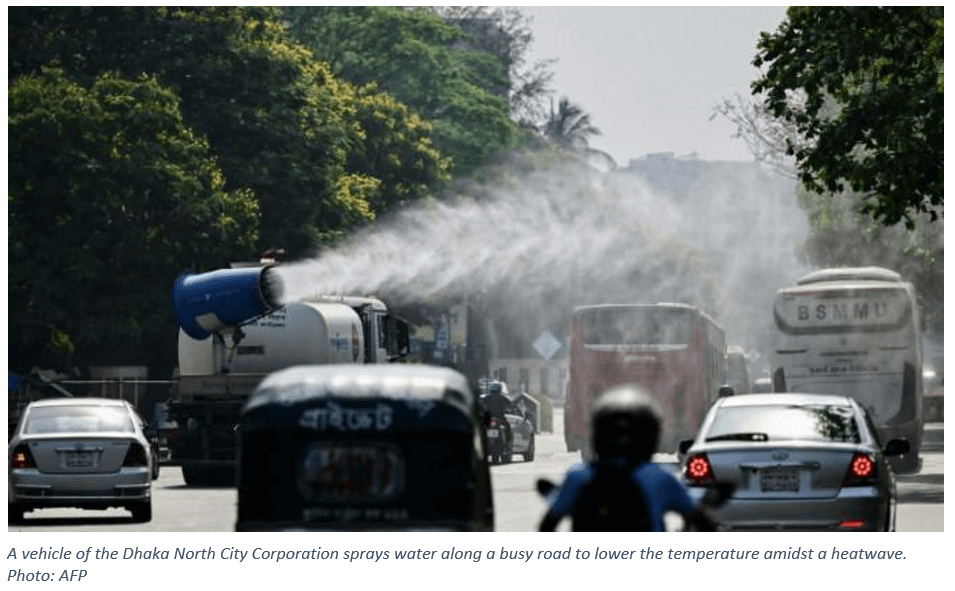
By Md. Tahsinul Haque, Freelance Writer, BSS (Sociology), MSS (Sociology), University of Dhaka, Bangladesh
Climate change’s worldwide effects are becoming more apparent as its spectre grows. Heatwave frequency and intensity increases are two of the phenomenon’s most visible signs. Heatwaves, while traditionally associated with tropical regions, are increasingly a global phenomenon affecting populations in both the Global South and North. Against this context, people in the Global North can learn a lot from the adaptation tactics used by heatwave-affected populations in the Global South.
Understanding the Heatwave Crisis
Heatwaves seriously jeopardise ecosystems, agriculture, infrastructure, and human health. As temperatures soar to previously unheard-of heights, vulnerable groups—the elderly, children, and those with pre-existing medical conditions—are especially prone to heat-related ailments including heatstroke, dehydration, and cardiovascular problems.
Lessons from the Global South
Recurrent heatwaves have long been a problem for countries in the Global South, including Bangladesh, India, and portions of Africa. Out of need, some areas have created adaption strategies that use local knowledge and creative fixes to lessen the effects of intense heat.
Community-Based Adaptation
Resilience-building efforts in heatwave-prone regions now centre on community-based adaption projects. Local communities have made use of their combined knowledge to put into practice tactics including:
Water Management: Desalination facilities, pond sand filters and rainwater harvesting have been installed to guarantee the dependable availability of clean water, which is essential for cooling and hydration during heatwaves.
Land Use Planning: Food security has increased and livelihood possibilities have been broadened by adaptive land use practices, which include growing heat-tolerant crops like sweet potatoes and maize and turning agricultural areas into shrimp aquaculture fields.
Built Environment: Innovative home designs, such as cluster housing and flood-proof buildings, have been embraced to resist high temperatures and flooding, offering safety during heatwaves and other hydro-meteorological calamities.
GPI (Government Policies and Institutional) Support
Climate resilience is built and adaptation efforts are facilitated in large part by government policies. With an emphasis on areas susceptible to heatwaves, such as agriculture, water supply, and public health, Bangladesh’s National Adaptation Programme of Action (NAPA) and Bangladesh Climate Change Strategy and Action Plan (BCCSAP) have offered the foundation for climate-resilient development.
Lessons for the Global North
Proactive adaptation measures are desperately needed in the Global North as heat waves become more frequent and severe in areas that are traditionally unaccustomed to such extremes. Several important lessons can be learned from the experiences of communities in the Global South.
Community Engagement: Giving local communities the authority to spearhead adaptation initiatives promotes ownership and guarantees sustainable and contextually appropriate solutions.
Multi-sectoral Approach: Heatwaves have many effects, and addressing them requires a concerted effort from the health, infrastructure, urban planning, and agriculture industries.
Investment in Resilience: Putting early warning systems, social safety nets and climate-resilient infrastructure first can lower vulnerability and improve adaptive capability.
Conclusion
As heatwaves become more and more of a concern worldwide, regional knowledge and experience sharing can improve adaptation plans and increase resilience. Communities in the Global North can handle the problems of a warming world and create a more sustainable future for coming generations by adopting the lessons from the Global South.
Photo credit: A vehicle of the Dhaka North City Corporation sprays water along a busy road to lower the temperature amidst a heatwave. Photo: AFP
Disclaimer: The views expressed in this piece are those of the author/s and do not necessarily reflect the views or policies of AIDMI.